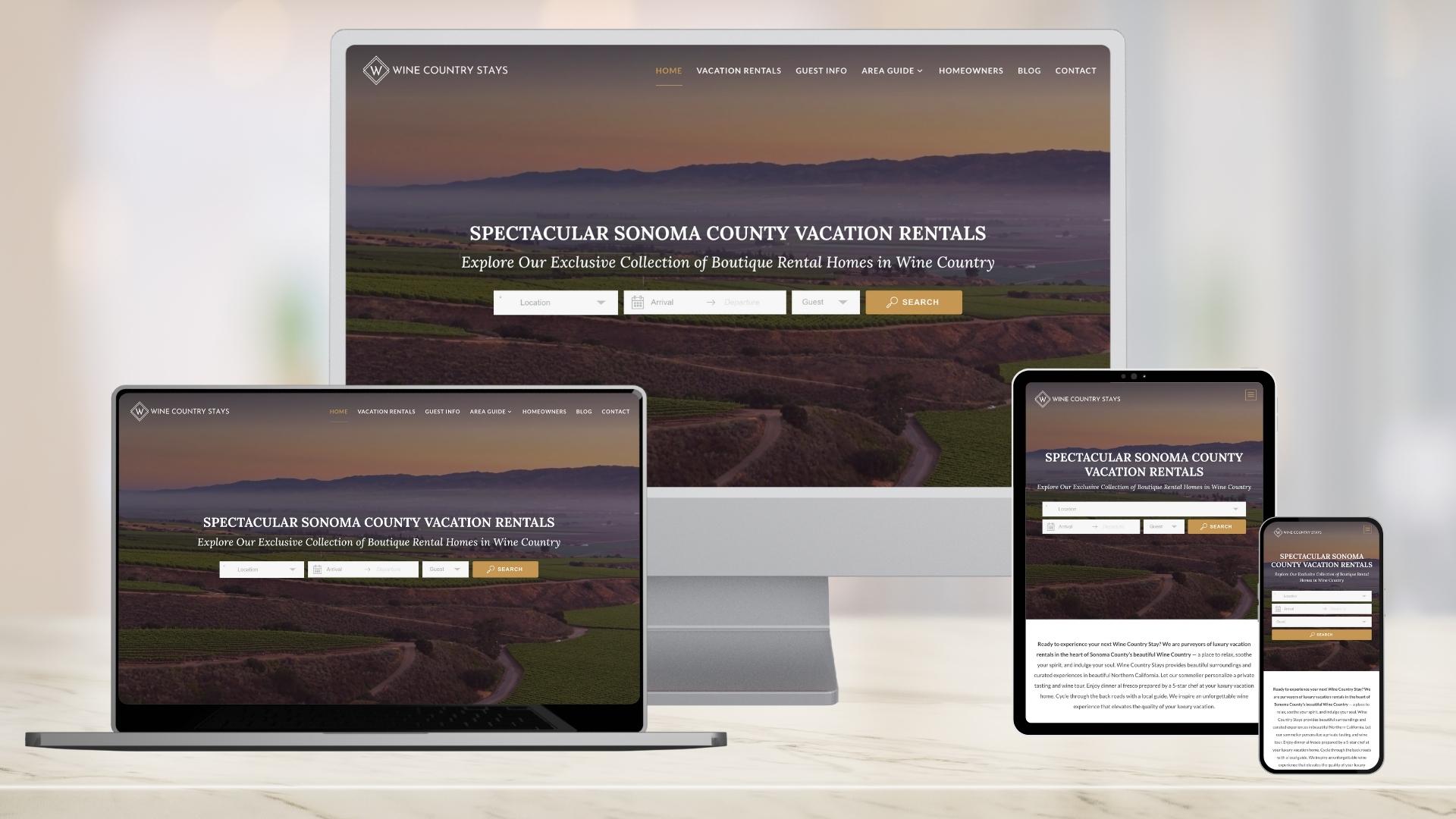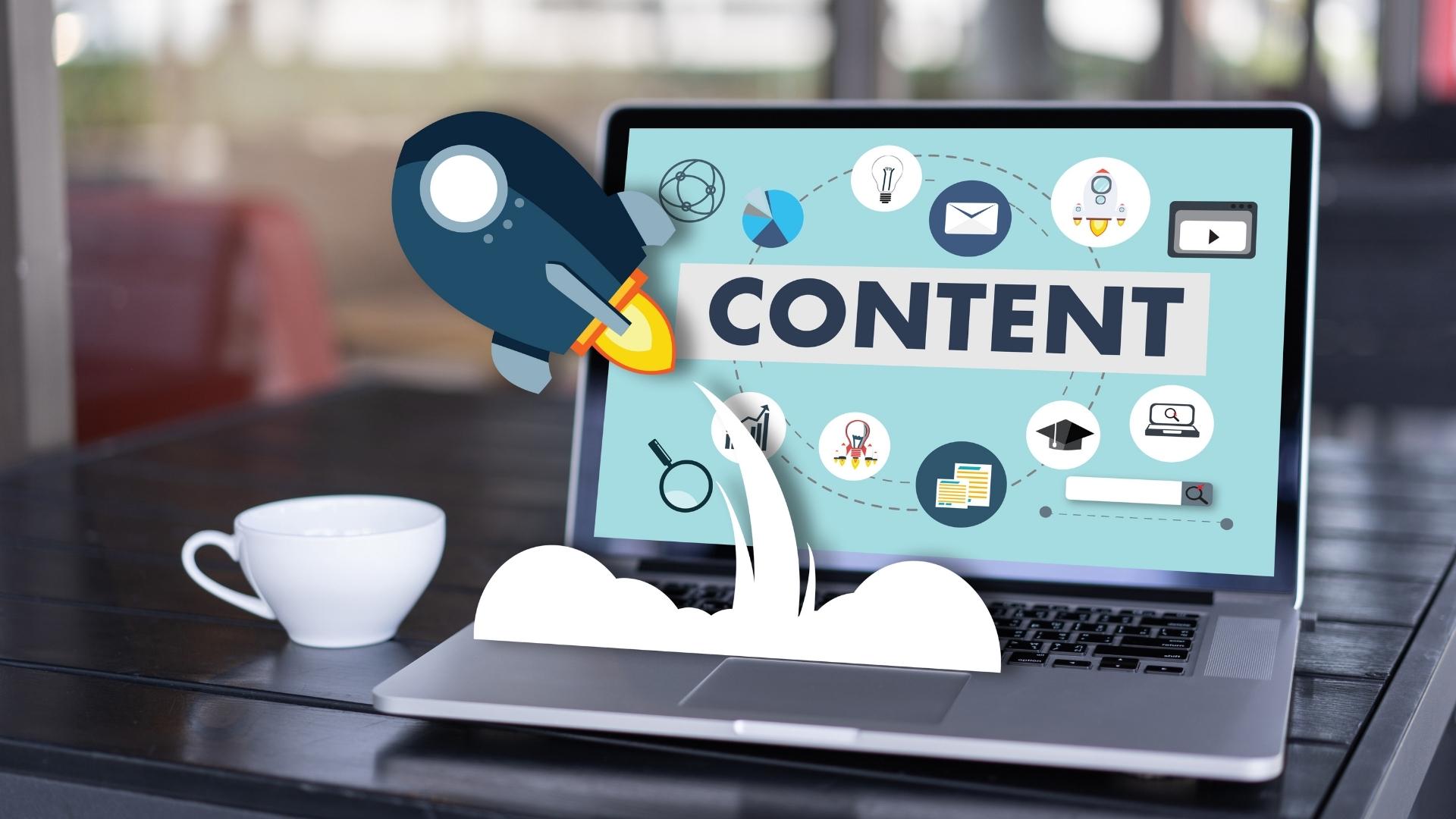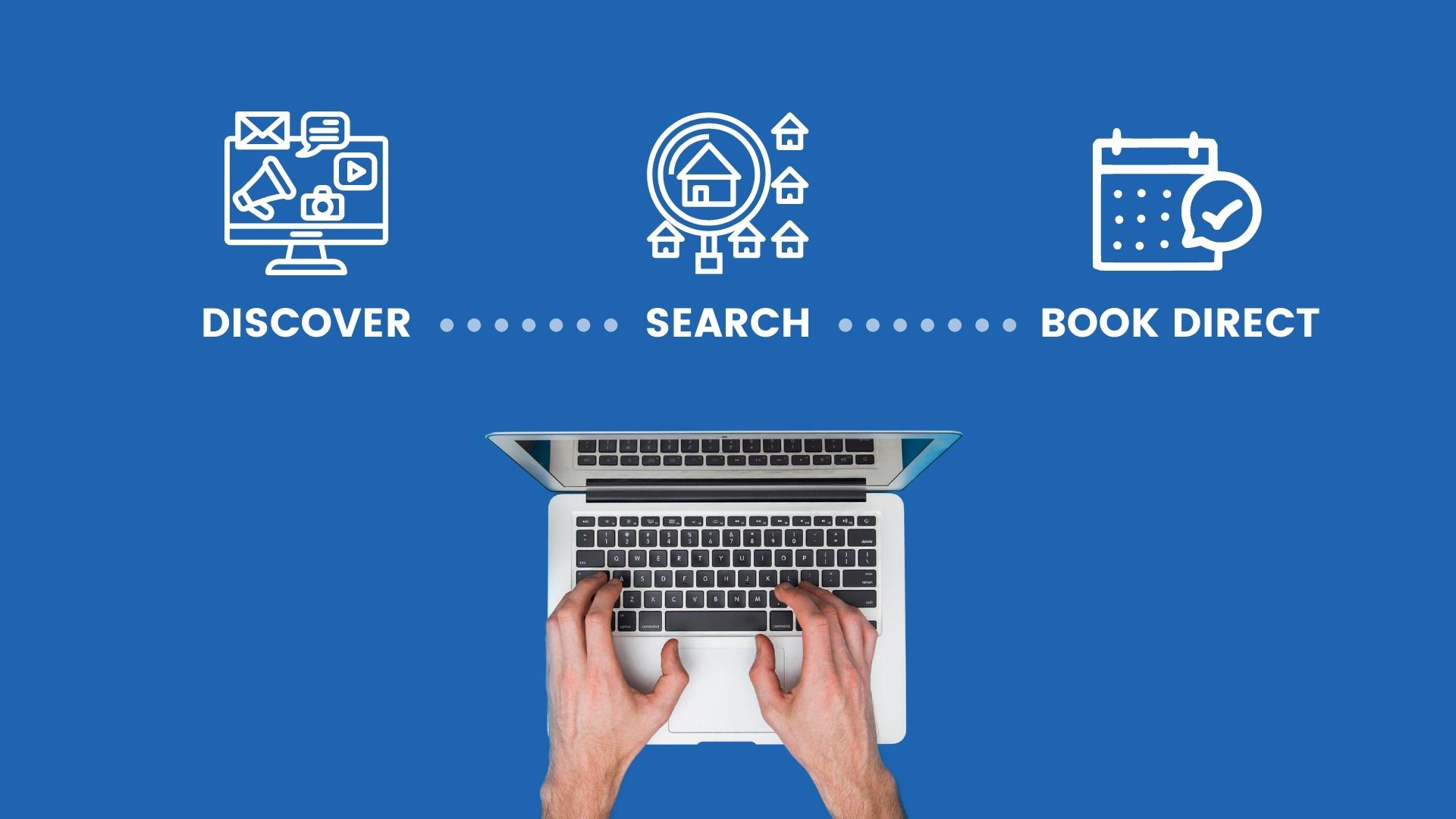Firstly, congratulations on becoming or already being a part of this fantastic industry and community! This article is for you if you’re officially a vacation rental property manager, whether you own a few rentals or manage properties for others. You already have optimized and competitive rates, professional photography, and captivating listing descriptions for your vacation rentals. The next step for you is to dive into the realm of building your brand, gaining direct bookings, and crafting a winning marketing plan to generate traffic, but you aren’t quite sure where to start…
Here’s our quick guide to the typical process we see for those starting out and wanting to generate direct bookings for their vacation rental business:

Choose Property Management Software
If you aren’t already using Property Management System (PMS), the time is now! It’s essential for vacation rental managers with multiple properties as it allows you to manage them efficiently. This software will provide your team with one source of truth and should have features that will help you manage your listings, bookings, payments, accounts, operational tasks, and guest communications. With this in place, you won’t have to manually update pricing or availability across the internet — whether that’s from your direct booking website or on Online Travel Agencies (OTAs) like Airbnb, VRBO, and Booking.com.
For example, Streamline VRS is a highly comprehensive PMS with a user-friendly dashboard and automated features that can save you time and money. Guesty has also become a popular choice and recently launched their “Guesty for Hosts” option for managers with less than 3 properties.
And as the industry has grown, software options have also increased. You’ll find numerous choices available, which can lead to a bit of overwhelm. Our recommendation — make a list of the features you must have for your team to have everything needed in one place. To get you started: should it have a built-in channel manager, unified inbox, automation for communication, connections to 3rd party tools as needed, revenue management, and accounting features?
Would you like to have an integrated digital welcome book? Perhaps even an app for your guests, homeowners, and team to easily access the information they’ll need. If you’re in a state that requires trust accounting, will the software be able to handle that appropriately?
Helpful Links to Find Your Perfect PMS

Build Your Website
Now that you’ve chosen your property management software, it’s time to build your direct booking engine! Your website is the online face of your business and should create a solid and lasting impression. It’s often the first point of contact for prospective guests (and homeowners) and should instantly build brand recognition and trust. You’ll want to ensure it showcases your properties well, is optimized for people to make an online booking easily, and has information about your property management services.
As a side note, if you still need to develop your brand, now is the time to do this step! From a professional logo to fonts and colors, you’ll want to make your vacation rental business memorable. We recommend crafting a brand guide that you and others can reference for everything your guests (and homeowners see) — your website, emails, social media, in-property guest materials, print collateral like business cards or brochures, etc. No matter where someone finds you, a cohesive brand is exceptionally vital.
The moral of the story, a well-designed brand and website with the right content will help your company stand out from the competition and position you as a trusted resource for information about your area.
There are ultimately two ways to configure your website, which we explain below. Whatever you do, remember that a significant number of reservations are booked from phones, meaning a responsive mobile-friendly experience is a must-have.
Main website + booking engine
If your PMS has a built-in booking website and you’re not ready to build a fully-integrated website, this may be an excellent avenue for you! With this option, you’ll be able to build out as much content as you would like and have strategically placed links to your PMS-provided booking website.
For this, we recommend making sure your booking website has the same navigation as your main website to keep the user experience as seamless as possible and ensure it is on a branded sub-domain. As an example, your main website URL would be www.website.com, while your booking website would be www.properties.website.com.
Fully-integrated website
This configuration keeps your guests on your main website through the entire experience and is exceptionally beneficial for Search Engine Optimization (SEO). If you have the budget, this is the most recommended solution, and there are many website developers out there.
We suggest finding a company specializing only in vacation rental website development and design. They should have the knowledge and expertise to make your website a booking engine machine — with detailed property pages, an easy booking process, and the ability to connect that information directly to your PMS.
Again, the thought is that you want all of your property information like listing description, images, and rates to be uniform across all websites where they show up, including your website.

Create Content for Your Website
Now that the technical development of your website is underway, the next step you’ll be diving into is creating content! Your main goal here will be to make sure your guests can find what they’re looking for quickly and easily. You’ll also want to position your company as a leading, trusted resource to find out information about visiting your area.
We are often asked what should be on a vacation rental website, and the answer to this partially depends on your market. But, as a general rule of thumb, you’ll want to have the following 7 pages at a minimum:
- Home
- Vacation Rentals (where guests can search your properties)
- Area Guide
- Blog
- About Us
- FAQ
- Contact
Vacation rental management companies looking to acquire new properties to manage should also have a page for their prospective homeowners to learn more about their services!
When creating content for each page of your website, consider including relevant keywords, optimizing images with alt-text tags, adding meta descriptions, using heading tags, and ensuring that all content is unique and original. To fully optimize your pages for the search engines, you’ll also want to have a solid search engine optimization (SEO) plan and have conducted keyword research — because what benefit is having content if no one is searching for the topic?
Once your website is up and running, you should create content on a regular basis. This could include blog posts about attractions in your area, adding upcoming events, and building out an area guide filled with resources for guests. Some of our clients even have homeowner-forward articles that cover topics their prospective owners are interested in. Remember, consistency is key to achieving your SEO goals and gaining organic traffic to your website.

Add Tracking Capabilities to Your Website
If this wasn’t already done when your website was built, we recommend doing this before going any further. What good are a website and direct booking marketing plan without the ability to track the performance and results, right? In order to see if what you’re doing is working, you’ll need to have analytics data from your website. The “king” of analytics is Google Analytics, which is now Google Analytics 4 (GA4).
For the optimum tracking setup, you’ll also want to configure e-commerce tracking, allowing you to see the revenue booked along with user flow (i.e., how users get to your site and where they drop off). This data is invaluable for creating an effective marketing strategy that drives the highest ROI.
Our partners receive a monthly report filled with analytics data from their website, direct booking information from sources like their PMS or Key Data Dashboard, and about each channel they’re marketing on (like email and social media).

Analyze Essential Market Data
Speaking of data and tracking, there are multiple platforms and companies out there today that provide a wide range of solutions to help you better understand current and historical market trends.
As a vacation rental marketing agency, we’re constantly analyzing market data to make sure our partners continue to stay ahead of the trends. We want to ensure occupancy levels are pacing with (or ahead) of the overall market trends, specific properties get a boost if they’re pacing behind, and gain an understanding of how our clients are benchmarking against their particular competitors.
These resources allow your internal team and other teams to see how occupancy levels, booking windows, and revenue is trending over a certain period. These are tools your entire team will find helpful, from revenue and operations managers to your sales and marketing teams. When used correctly, your teams will be armed with actionable information on optimizing rates, campaigns, and even homeowner communications.
You’ll find many options for this available as well. Our recommendation is Key Data Dashboard, as they offer data directly sourced from the PMS of you and your competitors. In our opinion, this gives you the most accurate and cleanest data available. Other companies use scraped data from the OTAs, which does not always provide a true understanding of your market.
A Few of the Data Platforms Available for Vacation Rental Managers

Craft Your Winning Marketing Plan
Alright, at this phase, you have a PMS configured with automated messaging, a fully-working ready to launch website, and are armed with a wealth of market data. Now it’s time to craft the winning marketing plan!
The marketing tactics you choose will vary based on your target audience and goals, but some general tips include creating content regularly through blogs, social media posts, email campaigns, and other digital channels. Having a presence across multiple platforms allows prospective customers to access information about your business easily and makes booking their stay much more seamless. We’ve found a multi-channel approach is the best way to ensure success, including:
- Paid search ads (PPC): quickly reach those searching for vacation rentals in your area
- Consistently adding new content to your website: boost organic traffic and engage users
- Monthly email marketing campaigns: stay top of mind with past guests and those who have signed up to receive your newsletters
- Social media: showcase your area and captivate followers into bookers
In conclusion, starting a vacation rental management company and beginning the journey to get direct bookings can be overwhelming, from finding a suitable PMS to launching your website and creating a marketing plan. However, once you have all the pieces in place for your direct booking empire, you will be well on your way toward succeeding in this rapidly growing industry!
By taking the time to understand the various marketing tools available at your disposal and structuring a comprehensive plan accordingly, you will be able to maximize occupancy rates during peak season while also providing exceptional service standards that keep guests coming back year after year.